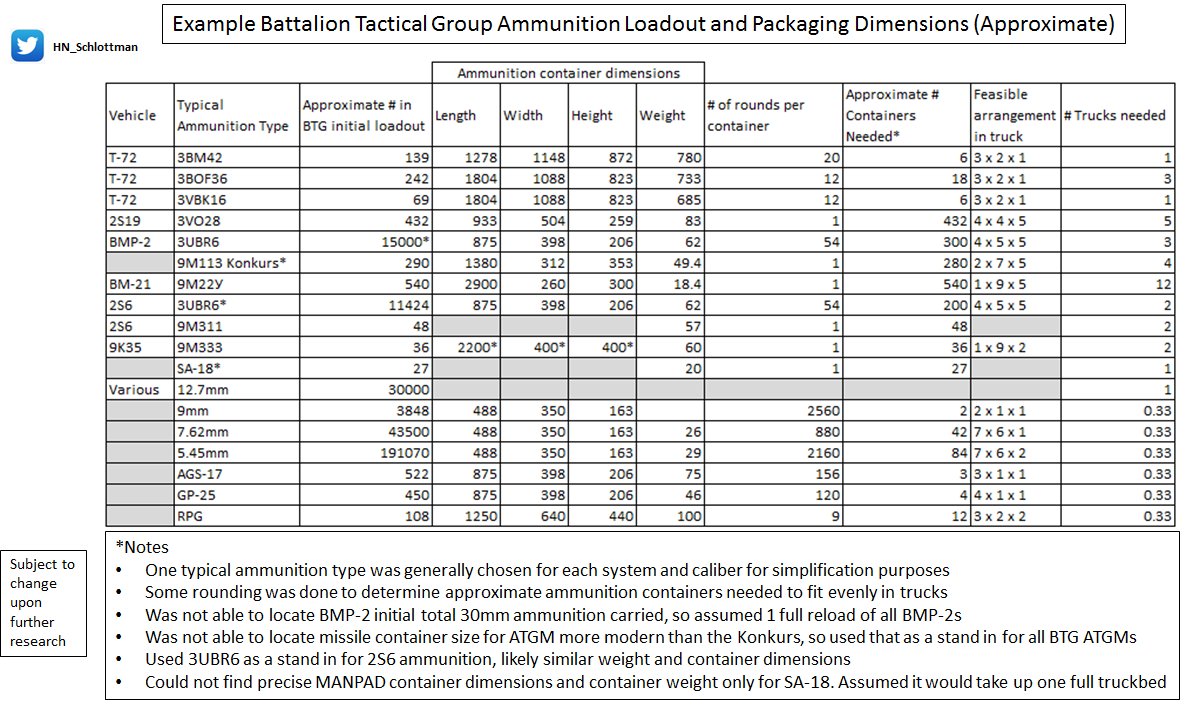1/ Made a more refined take on BTG logistical requirements, now taking into account fuel and ammunition packaging size. If spaced out daily, it still came to about ~14 truckloads + ~3 7,500 L tanker trucks (deleted the 1st thread because Twitter didn't like PowerPoint) 



2/ Actual resupply for ammunition is likely to measure on their end by units of fire (Боекомплект) which can vary by system, but the truckload metric at least gives us a rough idea of how much truck capacity may be needed.
3/ Obviously, they aren't necessarily expending all their ordinance for every system, and consumption may be more than expected for others (artillery mainly), so allocation of truckloads may vary.
4/ I tried to use a roughly "typical" BTG to determine requirements, the vehicle counts are on the first graphic. If a BTG is reduced because of losses, obviously it would consume fewer supplies. On the other hand, if it had a second battery of 2S19s, it would consume more.
5/ I wasn't able to find ammunition packaging sizes for all munitions and the actual arrangement of the ammunition within the trucks may be less or more efficient than I depicted or be mixed differently /end for now
6/Addendum, made a typo in BM-21 Grad weight, its 100 kg each for the round and packaging. Corrected it here. 

• • •
Missing some Tweet in this thread? You can try to
force a refresh








